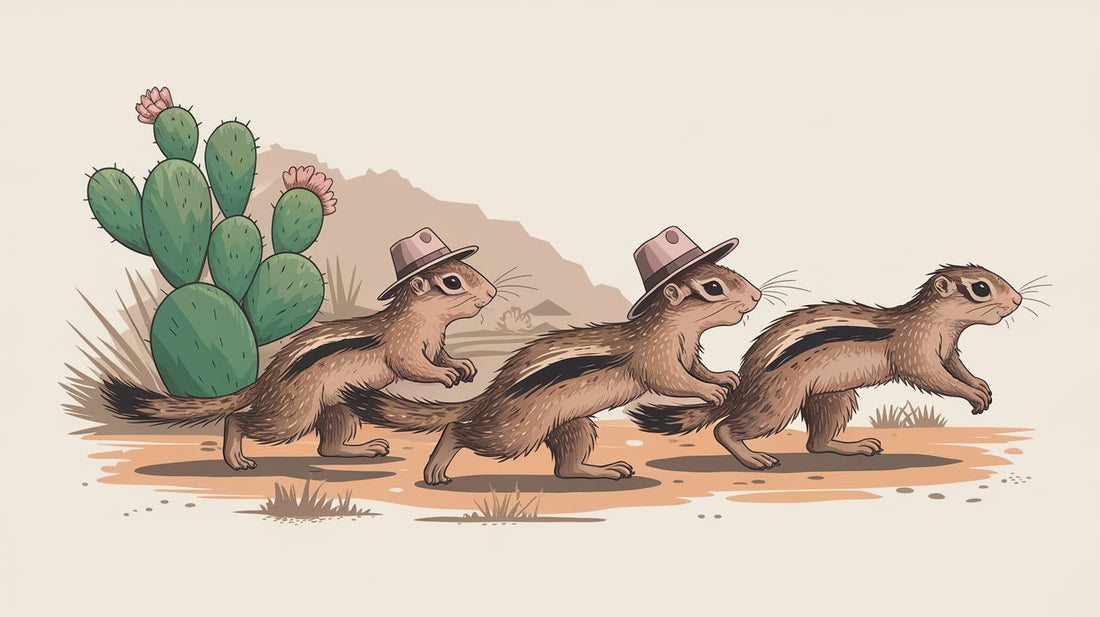
Exploring the Mojave Desert Ground Squirrels: Diet, Habitat, and Conservation
Share
The Mojave Desert is a place of striking beauty and diverse wildlife, home to a variety of species that have adapted to its arid environment. Among these fascinating creatures is the Mojave ground squirrel (Xerospermophilus mohavensis), an elusive and charming rodent native to this region. These small mammals play a vital role in the desert ecosystem. In this blog, we’ll explore their diet, behavior, and ways to protect them for future generations.
What Do Mojave Ground Squirrels Eat?
Mojave ground squirrels are primarily herbivores, with a diet that reflects the sparse resources of their desert home. Their food preferences include:
-
Seeds and Grains: These are a staple of their diet, providing essential nutrients and energy.
-
Desert Plants: They consume leaves, stems, and flowers from plants like creosote bushes, saltbushes, and desert grasses.
-
Fruits: When available, they enjoy seasonal fruits from desert plants, such as cactus fruits.
-
Insects: Occasionally, Mojave ground squirrels may eat insects, especially during periods when plant-based food is scarce.
This varied diet allows them to thrive in an environment where food availability fluctuates dramatically with the seasons.
The Role of Mojave Ground Squirrels in the Ecosystem
These small creatures play an essential role in maintaining the balance of the desert ecosystem. By consuming seeds, they help in seed dispersal, promoting plant growth and diversity. Additionally, their burrowing activity aerates the soil, improving its health and supporting other plant and animal life.
Threats to Mojave Ground Squirrels
Despite their importance, Mojave ground squirrels face significant threats, including:
-
Habitat Loss: Urban development, agriculture, and energy projects have reduced their natural habitats.
-
Climate Change: Rising temperatures and changing precipitation patterns threaten their food sources and survival.
-
Predation: Natural predators like hawks, coyotes, and snakes pose a constant threat to these small mammals.
How to Protect Mojave Ground Squirrels
Protecting Mojave ground squirrels requires a collective effort. Here are some practical steps:
-
Support Conservation Efforts: Contribute to organizations dedicated to preserving desert habitats and wildlife.
-
Promote Habitat Restoration: Encourage and participate in projects that restore native vegetation and reduce habitat fragmentation.
-
Adopt Sustainable Practices: Reduce your environmental footprint by conserving water and minimizing waste, which can help maintain the delicate balance of desert ecosystems.
-
Educate Others: Spread awareness about the Mojave ground squirrel and the challenges it faces to inspire more people to take action.
What You Can Do at Home
Even if you’re not in the Mojave Desert, you can make a difference:
-
Avoid using pesticides that can harm wildlife.
-
Advocate for the protection of open spaces and wildlife corridors.
-
Learn about native plants and incorporate them into your landscaping to support local wildlife.
Final Thoughts
The Mojave ground squirrel is more than just a resident of the desert; it’s a symbol of resilience and adaptability. By understanding their needs and the challenges they face, we can take meaningful steps to ensure their survival. Together, we can protect the Mojave Desert and all its unique inhabitants for generations to come.
